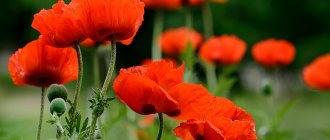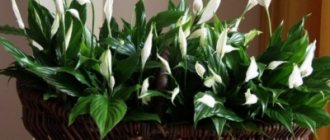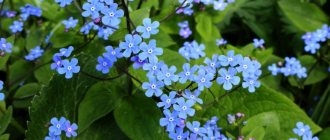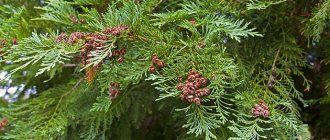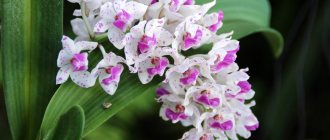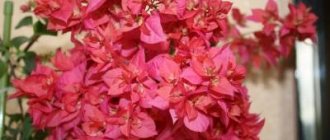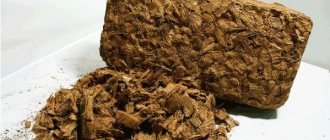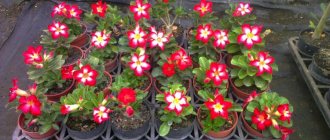From the article you will learn what a globular chrysanthemum flower looks like; photos of the plant are given in the section at the bottom of the article. A detailed description tells about the varieties and varieties of flowers. With the help of this review, you will receive information on how to choose the chrysanthemum you need based on the flowering time. You will become fully familiar with planting, propagating and caring for the plant, and you will be able to protect the flower from diseases and pests. Take advantage of the acquired knowledge and grow a magnificent chrysanthemum in the shape of a ball in your apartment or near your home.
Types and varieties of chrysanthemum, appearance
Globular chrysanthemum is a young variety bred specifically for decorative cultivation; some varieties are suitable for cutting for bouquets. Like all chrysanthemums, the plant belongs to the Asteraceae family.
A huge number of varieties and species of this flower have been bred. There are 16 species of spherical chrysanthemum, and there are several thousand varieties, among them there are both perennial varieties and annual plants. Decorative spherical chrysanthemums grow as a bush, the height of which does not exceed 0.7 m, and the plant acquires the shape of a ball on its own, without additional pruning.
All existing spherical varieties and species are divided into groups according to the height of the bush:
- The border group of chrysanthemums includes flowers with a bush, the height of which is 15-30 cm. In most cases, varieties of this group do not form root shoots, have a natural spherical shape, and bloom starting in the first months of summer. They look beautiful in pots.
- The medium-sized group collected plants with a height of up to half a meter. Plants can be grown for cutting. The varieties are varied, with a wide range of flower colors.
- Tall spherical chrysanthemums reach 70 cm.
According to the timing of flowering, early, middle and late varieties are distinguished. Taking into account the timing of flowering, landscape designers create flower beds that delight the eye with bright colors throughout the warm period of the year, from late June to October. In this case, both border and bush chrysanthemums are used.
Popular varieties of spherical chrysanthemums:
- Chrysanthemum Branindio - blooms in August. Yellow flowers have a golden-orange center, a diameter of 3-7 cm. The bush is highly branched, regular spherical in shape, up to half a meter in height.
- Branfountain varieties bloom from mid-September until cold weather, the diameter of the bush reaches half a meter, the flowers are double, approximately 4 cm in diameter. It has white, purple, salmon, and lemon colored flowers.
- Multiflora Branhill, the bush grows up to 30-40 cm, very lush, covered with flowers (their diameter is up to 5 cm) so that the leaves are not visible. Blooms in August and comes in two colors, Branhill Cherry with light cherry blossoms and Branhill Red with dark red blossoms. This variety can be used to grow low-growing dwarf borders.
- The late chrysanthemum Bransky plum has a tall bush (up to 70 cm) and double flowers of bright plum color, which delight the eye throughout September.
Look in our gallery of chrysanthemum multiflora spherical (varieties) photo selection of 30 colorful images.
Description
It has been known as an ornamental crop for over 100 years. Homeland - evergreen rainforests of Corsica and Sardinia. The generic name was received in memory of the captain of Soleurol, who first saw this plant during a trip to Corsica. In nature, it grows in rock crevices, where it is warm, humid and where the sun rarely shines. Its thin stems are tightly woven together and spread along the mountain slopes with an openwork green blanket.
Saltirolia grows in the wild in rock crevices.
Saltirolia (Helksina) is the only species of the genus. The main variety is Soleirolia Soleirolia with bright green foliage.
The main type of flower is Soleirolia Soleirolia
Decorative varieties of soleirolia have also been developed:
Argentia is a ground-blooded plant with silvery leaves.
The Argentia variety has silver leaves.
Variegata, notable for its leaves with a thin snow-white border.
The leaves of the Variegata variety have a thin snow-white border.
Aurea with golden-green foliage.
The Aurea variety has golden-green foliage.
The characteristic differences of the variety appear in bright light. Otherwise, the plants acquire their original emerald hue.
The species is characterized by the presence of tiny leaves only 5 mm in diameter. Because of the teardrop-shaped leaves, the plant is popularly called baby's tears.
Saltirolia has very small teardrop-shaped leaves.
Blooms in spring. The flowers are small (1 mm) located in the axils of the leaves. Numerous stems, intertwining, form a continuous green canvas. The roots are thin, thread-like.
Numerous shoots form a thick green mat
The plant is also known as indoor duckweed and Irish moss.
well to living conditions and is easy to grow in an apartment . Tolerates temporary drought: capable of rapid recovery as soon as watering resumes.
Soleirolia quickly recovers when watering is resumed
Soleirolia - video
Application
In medicine
Tea is brewed from dried chrysanthemum flowers, which has the following effect on the body:
- lowers blood pressure by dilating blood arteries;
- regulates the functioning of the heart muscle;
- has an antibacterial effect, helps with shortness of breath;
- removes toxins from the body, promoting its cleansing;
- calms down nervous excitement;
- improves hearing and vision.
At home
The plant is used to decorate rooms and gardens, create ekibana from dried flowers, make other crafts, and make fragrant sachets.
In cosmetology
For cosmetic care of the skin of the face and body, both water tinctures and extracts of chrysanthemum flowers and oil essences are used. Cosmetic baths, wraps, masks, and rubs are made with chrysanthemum essential oil.
Reproduction of Golden Balls
Flowers Golden Balls: photo
Reproduction of Golden Balls does not require human effort. Golden ball grows well by self-sowing. If you want to engage in its cultural propagation, you can buy ready-made seedlings at any garden store.
You can also get seedlings on your own. To do this you need to follow a few simple steps. First, plant the seeds in pots in early spring. Then the rudbeckia will bloom in the same year. Before planting the seeds, you can do stratification. It will need to be carried out a little less than a month before disembarkation; 3 weeks will be enough. This procedure should be carried out as follows: place the seeds in the refrigerator for the specified period, then keep them at room temperature for several days.
Ordinary garden soil in combination with humus and sand is excellent for the substrate. Seeds should be planted no more than 3 mm deep, and a distance of at least 10 cm should be maintained between each planting material planted.
In order to grow beautiful flowers from seeds, you must cover them with film or glass. After planting the seeds, you need to water lightly. Before the first shoots appear, which are already the size for planting, you need to ventilate the soil and carry out small waterings.
The first shoots will be noticeable already at the beginning of the third week after planting the seeds. Caring for seedlings requires special attention. Firstly, you should always monitor the moisture content of the upper layers of the soil. Also, do not forget about sufficient sacredness. In addition, seedlings need hardening. Hardening should be done in the fresh air, for example, on a terrace or balcony. The temperature during hardening should not fall below 15 degrees, otherwise the seedlings will die. When the height of the sprouts has reached 20 cm, they can be planted on the site.
If you already have an adult flower, then it can be used as material for new samples. Reproduction in this way is carried out before summer or after summer.
First, you need to dig up an existing plant. After this, you need to divide the roots into several parts. If you cannot see the rhizome well, then you need to wash it, and the problem will be solved. In order for all parts of the old plant to take root and become full-fledged new bushes, each part must have at least 2 shoots. The shoots must be already mature.
Choose a place for new bushes. Place part of the old bush to a depth of about 10 cm, fertilize with humus. And the last step: compact the soil with your hands and water. The first watering should be plentiful. It is important to remember that if you propagate rudbeckia in this way, it will bloom next season.
Nutritional value and chemical composition
- Calorie content of dried inflorescences – 24 kcal/100 g.
- The raw materials include: flavonoids, organic acids, carotenoids, a wide range of vitamins, unsaturated aromatic lactones of the unsaturated series, organic acids, amino acids, sugars, pectins, macro- and microelements, anthocyanins, glycosidic compounds, aromatic essential oils, hydrocarbons.
Use in landscape design
A distinctive feature of the bloomer is that it remains decorative throughout the year; evergreen perennials do not shed their leaves, but retain a fresh green appearance, which flower growers actively use when decorating alpine hills, rockeries, borders, and rocky slopes. Globularia is lost; when planted alone against the background of other garden flowers, in order to reveal all the beauty of the plant, they are planted in single flower beds, paths and entire clearings. It also goes well with rose bushes, phlox, cereals, geraniums, sedum, sedum, chamomile, and yarrow.
How to grow, care and pests and diseases
Beautiful spherical chrysanthemums, the cultivation and care of which are not particularly difficult, will perfectly decorate your home and garden. Simple rules for growing and caring for them will tell you how and where to plant a plant, how to care for it in summer and autumn, and how to preserve it in winter.
- They are planted in open ground when consistently warm weather sets in, usually in the first half of May.
- Where to plant: the plant loves loose, rich, moderately acidic soil. For placement, choose well-lit places without drafts.
- How to propagate: by green cuttings, dividing the bush, rhizomes. If you use seed propagation, then varietal characteristics are extremely rarely preserved.
- How the spherical chrysanthemum overwinters: after flowering, the branches are cut off, leaving 12-15 cm in length. In warm areas, you can leave the flower in the soil for the winter, insulating it on top with sawdust and fallen leaves. In cold northern regions, the plant is dug up, transplanted into a container and stored until spring (with watering once a month) in a cool place at a temperature of about 5 °C.
What diseases does the plant suffer from, what pests can appear on the globular chrysanthemum:
- Fungal diseases are caused by heterotrophic organisms that live in the soil and on plant debris. To treat a plant, it is necessary to thin out the bush, reduce the acidity of the soil (do not allow a large amount of nitrogen in fertilizers), and treat it with chemicals.
- Dark spots on the leaves are caused by microorganisms of the Mycospherellella family; the disease is called Septoria and lives in plant debris. As treatment and prevention, it is necessary to regularly remove fallen leaves, avoid excessive watering, and you can treat the bush with fungicides.
- Chrysanthemum can be affected by pests: spider mites, slugs, aphids, weevils, thrips, caterpillars. To combat insects, folk remedies or chemicals (methylpyrimifos, derris, etc.) are used.
This is how a spherical chrysanthemum is planted; planting and care are simple and straightforward.
Flower Golden Ball: outdoor care
Flowers Golden Balls: photo
These flowers are considered quite drought-resistant. However, rudbeckia will feel better if you water more abundantly in hot weather. If this is not done, the flowers may lose their beauty.
After the rudbeckia has bloomed, cut off the part of the plant that is above the ground. About 10 cm should remain from the stem. In open areas, rudbeckia grows very quickly and can interfere with neighboring plants. This is important to consider when planting plants. You can choose a separate place for rudbeckia or make a partition for the roots.
Every 5 years the flower needs to be thinned out; you can remove whatever you want. In winter it is not necessary to cover the flower. Rudbeckia needs to be fertilized in May and at the end of summer. The first feeding is done before flowering, the second can be done in the first days of autumn. Any mineral complex is suitable for feeding this plant. Without feeding, the plants will be less lush and the flowers will be less vibrant in color.
Pests of rudbeckia are not terrible, nor are diseases. It is quite resistant to both the first and the second. If you neglect the plant too much, powdery mildew may develop on it. This disease appears as a white coating on the plant. If you do allow this to happen, you will need to spray the plants with liquid copper sulfate or colloidal sulfur.
If you notice brown spots on rudbeckia, it means that there is a leaf nematode. If your plant gets sick with this disease, you should spray it with Bazamid or Nemaphos.
Daisies – photo
It's hard to resist the simple yet vibrant beauty of daisies. And who needs it? Just look how good they are even in the photo!
Photo: pl.pinterest.com
Photo: floranelsalento.blogspot.com
Photo: grounde.ru
Photo: funart.pro
Photo: 2sotki.ru
Photo: profiogorod.ru
Photo: 1zoom.ru
Photo: plantarium.ru
Photo: plodogorod.com
Photo: 1zoom.ru
Photo: bergamotblog.blogspot.com
Photo: ru.wallpaper.mob.org
Photo: pxhere.com
Photo: pixabay.com
Photo: wallbox.ru
Photo: dekorsad56.ru
Photo: zen.yandex.ru
Photo: pxhere.com
Photo: agropovolgie.ru
Photo: mnogocvetik.ru
Photo: pxhere.com
Photo: pixnio.com
Photo: pxhere.com
Photo: en.m.wikipedia.org
Photo: oir.mobi
Photo: zen.yandex.ua
Did you like the post? Subscribe to our channel in Yandex.Zen, it really helps us in our development!
